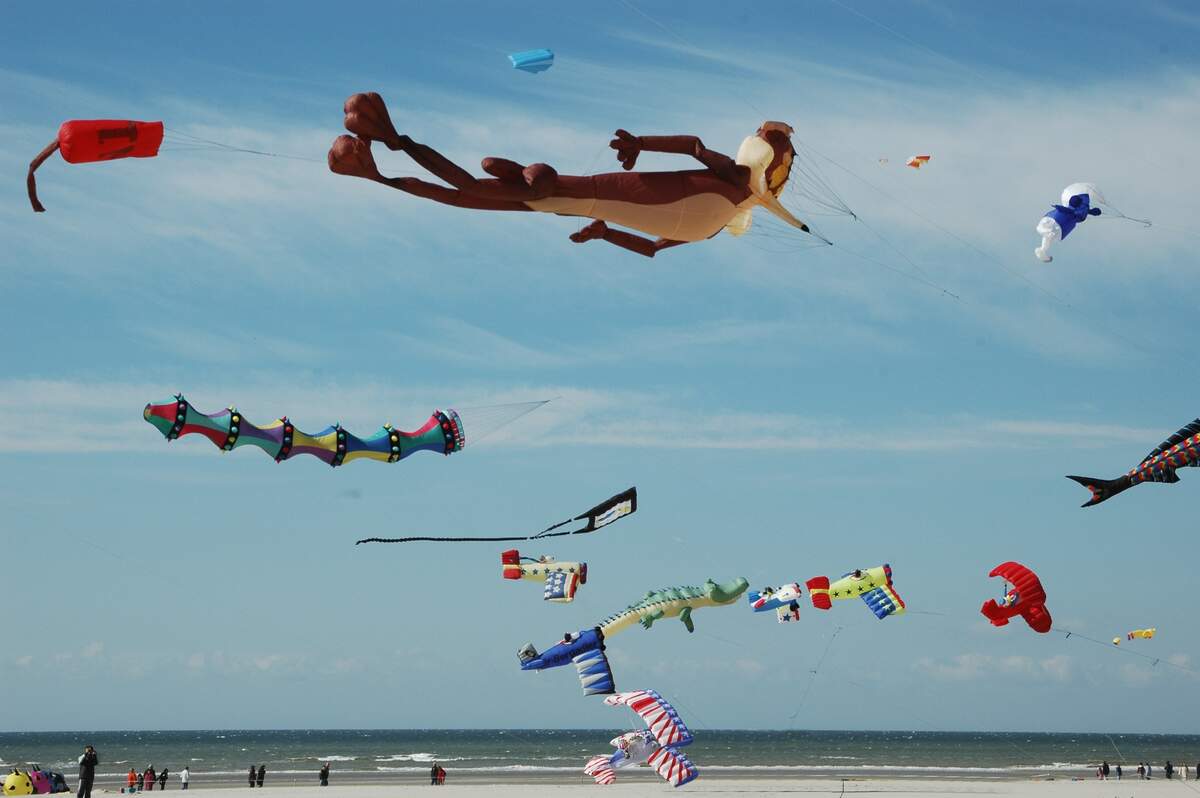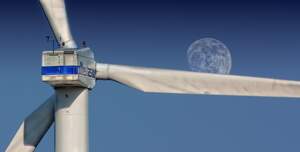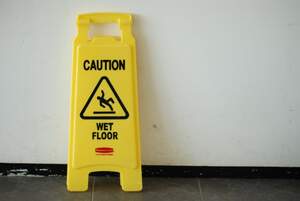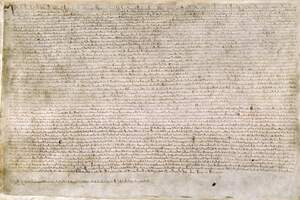

Fly a Kite Day
Fly a Kite Day takes place on the anniversary of the date in 1752 when Benjamin Franklin flew a kite in a thunderstorm, with the intent of proving that lightning was caused by a discharge of electricity (some sources say he flew his kite on June 10). His experiment led to further understanding of positive and negative charges, the proving that lightning was an electrical discharge, and to the invention of the lightning rod—which provided a safe way to discharge electricity and a way to prevent fires. Lightning rods are still used today to protect buildings, ships, and people.
Franklin began his experiments with electricity in 1747 and began hypothesizing about the connection between electricity and lightning two years later. He set out to prove his hypothesis; his idea was to erect iron rods into storm clouds to attract electricity. He believed he would need to be on high ground for his experiment to work, but he was in Philadelphia, a city that is quite flat. At first, he was waiting for the steeple to be finished at Christ Church, believing that he could use it for his experiment.
Franklin wrote about his iron rods idea to Peter Collinson, a member of the Royal Society of London, but the group did not see the importance of the idea. Soon afterward, though, his idea did attract the attention of French scientists Delor and Dalibard. Shortly before Franklin did his own experimenting, unbeknownst to him, they successfully completed his iron rod experiment, and called it the "Philadelphia experiment."
Franklin decided to test his theory by flying a kite instead of waiting for the steeple to be finished on the church. Accompanied by his son William, he built a kite with cedarwood and a silk handkerchief and attached a foot of wire to the top of it to act as a conductor. At the bottom of the kite was string, and at the point the string was held was a silk ribbon and a metal key. A metal wire connected to the key and went to a Leyden jar.
As Franklin flew his kite in a lightning storm, he kept dry by standing in a barn. The kite was not struck, but the conductor gained negative charges. They went through the kite, string, key, and to the Leyden jar. This showed that a conductor could be used to channel electricity into the ground. At one point, he moved his hand close to the key and gained a shock because of the positive charge of his body. Franklin later was credited with coming up with various electricity-related terms. Fittingly, today is also National Electricity Day.
Kites were used for centuries before Benjamin Franklin did his experimenting. It is believed that kites came from Shangdong, an eastern province of China; they were spread to India by traders, who brought them to Korea and then across Asia. Different styles of kites, as well as different cultural purposes for flying them, came about in different locations. Early kites were often made with bamboo, and covered with silk and paper. In 1295 CE, European explorer Marco Polo documented kites and how to fly them. By the sixteenth century, books and literature had publicized kites as children's toys, which helped them gain in popularity.
Eventually, kites began being used for science. In 1749, Scottish meteorologist Alexander Wilson measured air temperature at 3,000 feet with a thermometer attached to a kite. Three years later, Benjamin Franklin did his experimenting which gave us Fly a Kite Day. The Wright brothers used kites for research when they were building the first airplane in the late 1800s. In the first half of the twentieth century, new kite designs began taking flight, such as the diamond kite, tetrahedral kite, flexible kite, sled kite, and parafoil kite. Starting in the 1950s, NASA began using kites for spaceship recovery. Over the years kites have also been used for surveillance during war. The American Kitefliers Association was formed in 1964. With so many uses, both for leisure and science, kites are well deserving of being celebrated today.
How to Observe Fly a Kite Day
Both kites and Benjamin Franklin may be celebrated today. Probably the best way to celebrate is to fly a kite. If you don't have a kite, you could make your own. You could make a diamond kite or tetrahedral kite. You could search for some kite festivals or events in your area or plan a trip to some of the other big kite festivals around the world. You also could join the American Kitefliers Association, find kite clubs and retailers in your area, or visit the World Kite Museum.
You could visit Benjamin Franklin's grave, which just so happens to be located in Christ Church Cemetery. While there, you could look up at the steeple that Franklin was once waiting for to be built before he decided to use a kite for his experiment instead. You could also visit the nearby Benjamin Franklin Museum.
It's probably not best to try Franklin's experiment at home, but his own description of what he did was published in the Pennsylvania Gazette on October 19, 1752, and can be read here:
"Make a small Cross of two light Strips of Cedar, the Arms so long as to reach to the four Corners of a large thin Silk Handkerchief when extended; tie the Corners of the Handkerchief to the Extremities of the Cross, so you have the Body of a Kite; which being properly accommodated with a Tail, Loop and String, will rise in the Air, like those made of Paper; but this being of Silk is fitter to bear the Wet and Wind of a Thunder Gust without tearing. To the Top of the upright Stick of the Cross is to be fixed a very sharp pointed Wire, rising a Foot or more above the Wood. To the End of the Twine, next the Hand, is to be tied a silk Ribbon, and where the Twine and the silk join, a Key may be fastened. This Kite is to be raised when a Thunder Gust appears to be coming on, and the Person who holds the String must stand within a Door, or Window, or under some Cover, so that the Silk Ribbon may not be wet; and Care must be taken that the Twine does not touch the Frame of the Door or Window. As soon as any of the Thunder Clouds come over the Kite, the pointed Wire will draw the Electric Fire from them, and the Kite, with all the Twine, will be electrified, and the loose Filaments of the Twine will stand out every Way, and be attracted by an approaching Finger. And when the Rain has wet the Kite and Twine, so that it can conduct the Electric Fire freely, you will find it stream out plentifully from the Key on the Approach of your Knuckle. At this Key the Phial may be charg'd; and from Electric Fire thus obtain'd, Spirits may be kindled, and all the other Electric Experiments be perform'd, which are usually done by the Help of a rubbed Glass Globe or Tube; and thereby the Sameness of the Electric Matter with that of Lightning compleatly demonstrated."





















